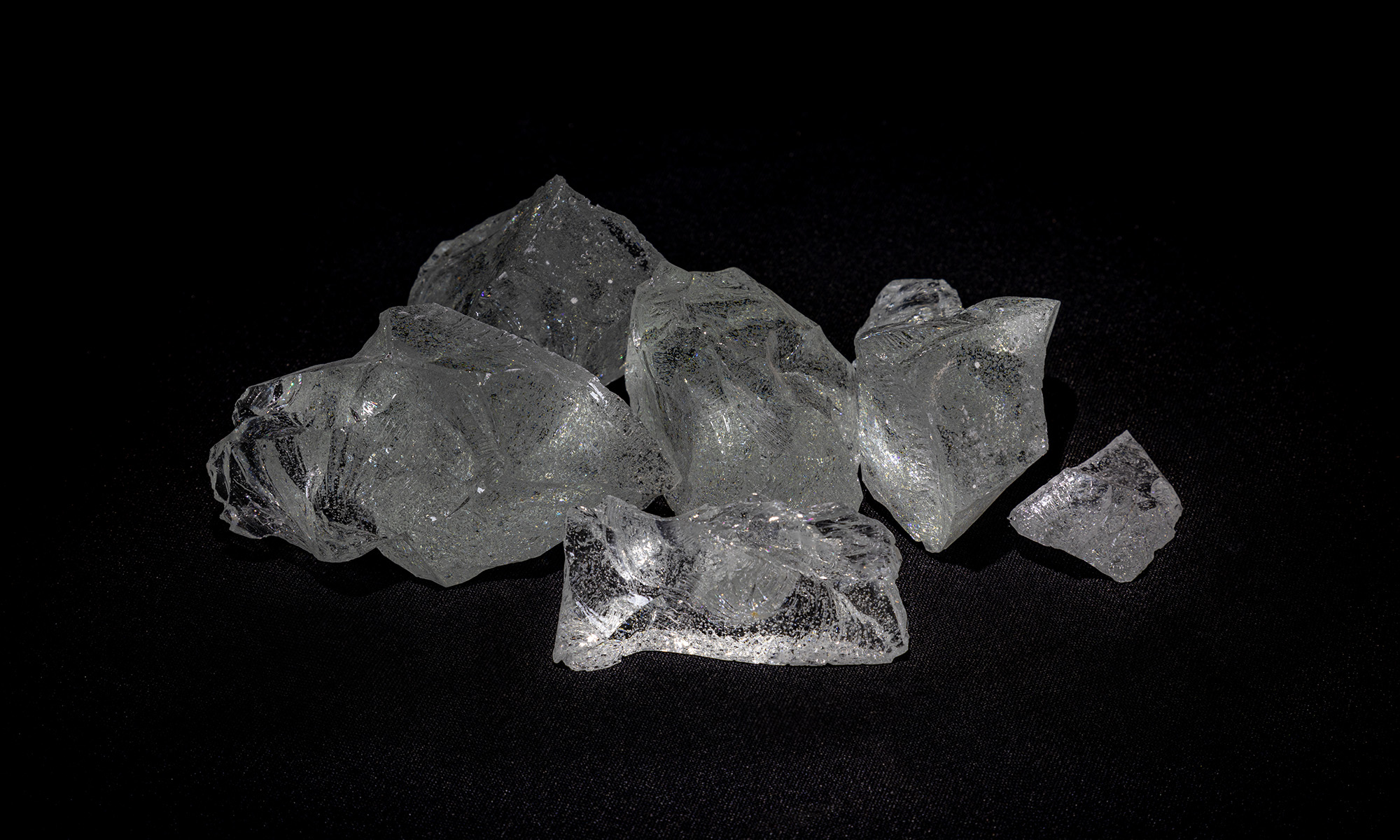Most of my crystalline glazes use frits that I make myself.
Frits play a central role in crystalline glaze recipes. These pre-melted glasses provide the necessary glaze components in an insoluble form.
A great many frit compositions are available but none are formulated specifically for the unusual requirements of the zinc silicate crystalline glaze. Many commercially available frits are somewhat variable in nature. No doubt they are sufficiently well controlled for their intended purpose, but the crystalline potter, requiring exacting control over glaze compositions, will be all too familiar with the frustration of having to deal with batch to batch variations. Ferro 3110 is present in a great many popular recipes but it suffers from variability.
What would ideal crystalline frits look like? Zinc oxide can form a substantial proportion of the flux, a feature which would be unsuitable for most other types of glaze. It should also contain a high proportion of the main alkali metal fluxes. Ideally it would contain no alumina thereby allowing some clay to be used in the recipe to improve the application characteristics. It goes without saying that it should have very low solubility.
I have developed several frits that meet these requirements. One of the most versatile I call ‘ZnNa5515’, it has the molar proportions:
Na2O 0.5 SiO2 1.5 ZnO 0.5
As an example of its use, consider this popular formulation for a cone 9 crystalline glaze:
NaKO 0.21 Al2O3 0.03 SiO2 1.7 CaO 0.11 B2O3 0.03 ZnO 0.68
Realised using 3110 frit, one recipe for this glaze is:
Ferro 3110 frit 42.0 Calcium carbonate 1.2 Zinc Oxide 29.6 Kaolin 2.8 Silica 24.5
With ZnNa5515 frit, it is:
ZnNa5515 frit 33.4 Ferro 3134 frit 4.8 Calcium carbonate 4.1 Zinc oxide 20.8 Kaolin 6.8 Silica 30.0
These two give almost identical fired results but the second has much better application characteristics (because the kaolin is more than double). ZnNa5515 has very low solubility, lower than the popular Ferro 3134 (which can cause problems if the glaze is stored in liquid form over an extended period – consider using Ferro 3195 instead if it is a problem).
I make ZnNa5515 by fusing the correct proportions of zinc oxide, sodium carbonate (soda ash) and silica at around 1200 ºC and then ball milling the resulting glass to a powder passing 100s mesh.


